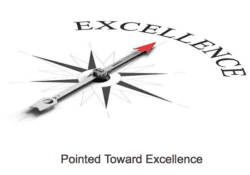Mark's Note: Today's post is by Kay Kendall, CEO & Principal of BaldrigeCoach. You might remember her from episode #277 of my podcast. She's the co-author of Leading the Malcolm Baldrige Way: How World-Class Leaders Align Their Organizations to Deliver Exceptional Results. Kay sent this out recently via her email newsletter and I asked her if I could share it here.
 At BaldrigeCoach, have the privilege of working with many great clients. I have to admit, though, that some of our favorites are in long-term care. We've noticed that the leaders of some of the best long-term care facilities are unaware of how exceptional they are. It isn't false humility. They simply assume that what they do and what their centers accomplish is the norm. They couldn't be further from the truth.
At BaldrigeCoach, have the privilege of working with many great clients. I have to admit, though, that some of our favorites are in long-term care. We've noticed that the leaders of some of the best long-term care facilities are unaware of how exceptional they are. It isn't false humility. They simply assume that what they do and what their centers accomplish is the norm. They couldn't be further from the truth.
We point out how their results compare favorably with other top performers, and they still aren't satisfied that they're as good as they could be. Contrast this with some other potential clients who have come to us because they want to win an award. Almost invariably, their leaders have an inflated view of how good their organizations are. When we point out how their results compare unfavorably with top performers, they offer a variety of excuses for why they aren't able to achieve similar performance.
Frankly, we don't buy any of their excuses. We've had exceptional clients in long-term care from tiny rural areas and from impoverished neighborhoods in large cities. Some are stand-alone centers while others are part of a large chain. Some are for-profit and others not-for-profit. Some have fancy, new facilities while others are making due with facilities built 50 years ago. Some focus on private pay and Medicare while others manage with a resident population almost exclusively covered by Medicaid. If none of these are predictive factors of excellence in long-term care, what is?
We've identified 10 characteristics of our clients who provide exceptional long-term care, and they all require the commitment of the senior leaders.
Senior leaders:
1. Personally role model the mission, vision, and values of the organization.
2. Acknowledge when they make a mistake, apologize, and work to prevent a recurrence.
3. Demonstrate a relentless focus on continuous improvement, regardless of any awards or recognition their organization has received.
4. Instill pride in their workforce about the importance of providing excellent customer service.
5. Put energy into developing strong hiring, recruitment, and retention processes to minimize staff turnover.
6. Prove their commitment to lifelong learning through continuing in their own development and investing in the development of their employees.
7. Celebrate small wins and provide meaningful recognition.
8. Involve their workforce in improving their work by training them in problem-solving tools and the use of data for fact-based decisions.
9. Leverage those skills in making proactive improvements instead of only addressing problems.
10. Participate in quality award programs for the value of the objective feedback received.
How would you rate yourself and your senior leaders on these characteristics? How could a focus in one or more these areas help move your organization toward excellence?
This article from Harvard Business Review might also interest you.
Mark's question: What do you think of that list of characteristics? Pretty similar to what we might say about behaviors for Lean or Kaizen-style continuous improvement, right?
Please scroll down (or click) to post a comment. Connect with me on LinkedIn.
Let’s build a culture of continuous improvement and psychological safety—together. If you're a leader aiming for lasting change (not just more projects), I help organizations:
- Engage people at all levels in sustainable improvement
- Shift from fear of mistakes to learning from them
- Apply Lean thinking in practical, people-centered ways
Interested in coaching or a keynote talk? Let’s talk.
Join me for a Lean Healthcare Accelerator Trip to Japan! Learn More









